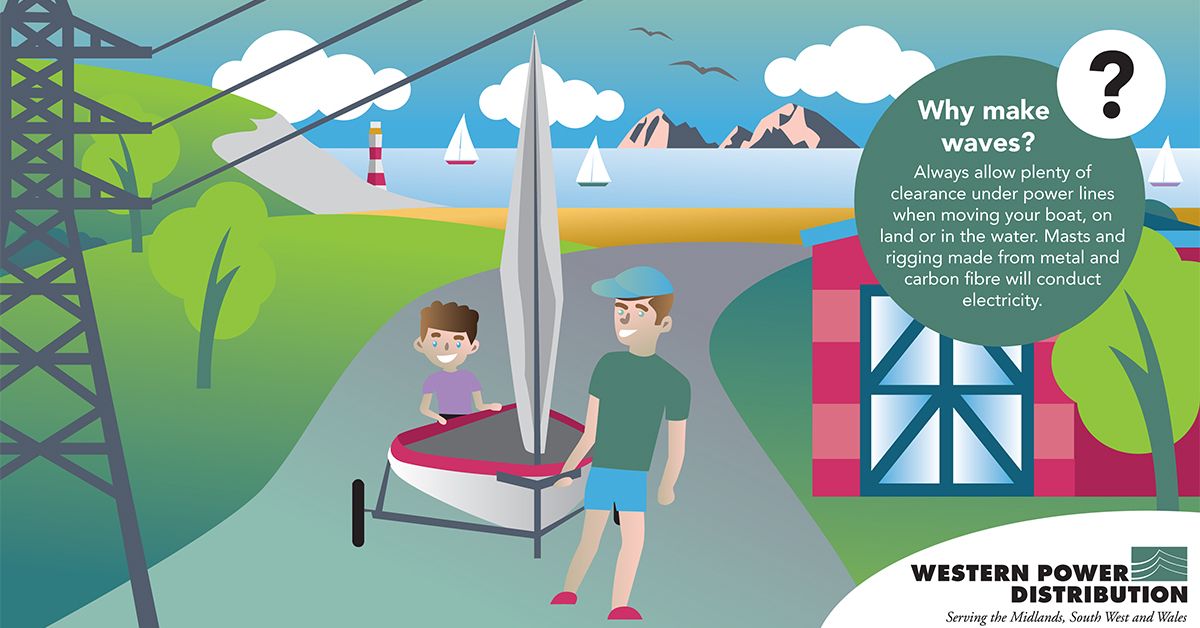Boat users: Stay safe, steer clear of overhead lines
Electricity can kill – that is the message to boat lovers who are being reminded to steer clear of overhead power lines when moving their boats to and from the water.

Last year, WPD engineers responded to more than 370 incidents in which members of the public had come into contact with overhead lines while taking part in various outdoor activities.
The majority of sailing accidents involving electricity happen when boats make contact with overhead lines while being rigged or moved on dry land. In recent years, people have been fatally or seriously injured by electricity while rigging or moving boats in car parks, on their driveways and in the road outside their homes.
Anyone touching a boat where the mast or rigging is in contact with an overhead line is at risk of being killed. Masts, rigging, strings, rope and water all conduct electricity.
Eddie Cochrane, WPD Safety Adviser, said: “Every year, we respond to hundreds of incidents where people have come into contact with overhead lines.
“Sailors may be at increased risk of contact with live powerlines because the metal masts and rigging of sailing boats are often higher than the lines. We urge all boat users to take extra care when moving a boat with the mast erected and to look out for overhead power line warning notices and exclusion signs.”
Top five tips on sailing safety:
- Unpack, set up and put away your boat at the water’s edge or away from overhead power lines.
- Take extra care when moving a boat with the mast erected.
- Look out for overhead power line warning notices and exclusion zone signs and obey any instructions.
- Tell the site owner or club secretary of any dangerous situation or near miss that you see.
- Always assume a power line is live. If your boat comes into contact with an electrical wire, stay away and call 105, our emergency number. If someone is on the boat, they must stay on the boat. Climbing out could be fatal.
For more information, visit our Sailing Safety page here.
- About Us
